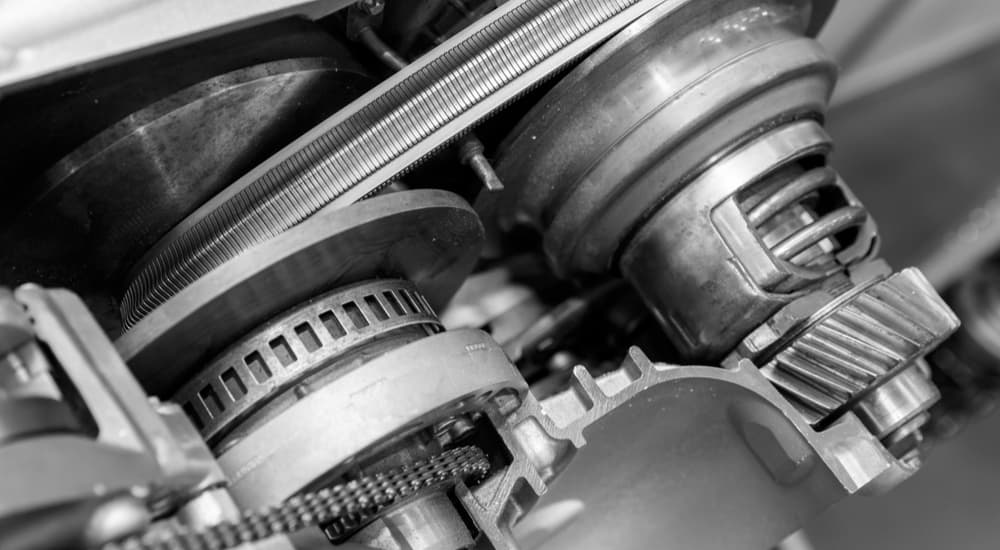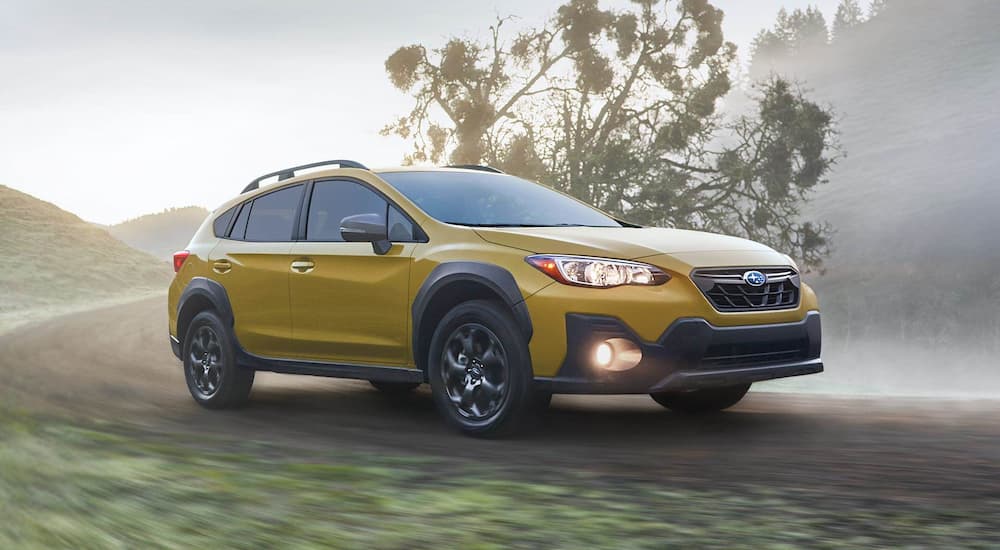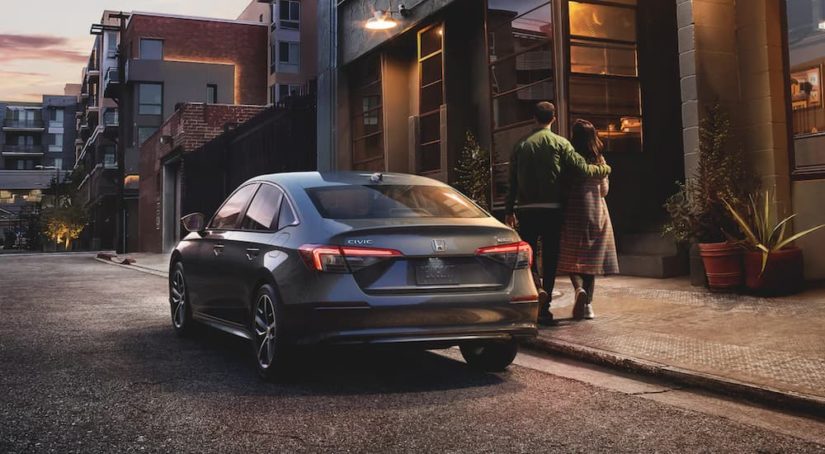Unless you are a car enthusiast, you probably don’t spend much time thinking about the transmission in your car. However, if you are shopping for a new car these days, you might find yourself wondering what the letters “CVT” stand for and whether you want a CVT in your car. This relatively new type of transmission offers a rather different driving experience than your traditional automatic transmission and has been somewhat polarizing among drivers. However, there are many benefits to the CVT, and auto manufacturers are installing them in all types of vehicles these days.
Starting with the basics, “CVT” stands for “Continuously Variable Transmission” – a type of transmission that uses belts rather than gears. These belts give the transmission an effectively infinite number of possible gear ratios, and it can continuously alter its gear ratios on the fly without any need for shifts between gears. This means that when you are driving a car with a CVT, the engine can hold constant RPMs even while accelerating or decelerating. Why would that be a good thing? Fuel Efficiency.

Why Is a CVT More Efficient?
All internal combustion engines have a set speed (engine speed, measured in RPMs, not road speed) at which they are most efficient. Transmission gearing is a way to keep your engine operating at its most efficient speed even when the car is traveling at different road speeds. However, a traditional transmission with a fixed number of gears means that your engine still has to increase its RPMs to a certain point before shifting to the next gear is possible, usually pushing the engine out of its most efficient speed in the process.
The more gears your transmission has, the less the engine has to rev between shifts, which is why we have seen manufacturers progress from 2 and 3-speed transmissions in the 1950s to 8 and 9-speed transmissions today. The CVT is the next step in the process, giving the car a virtually unlimited number of gears and removing any need to rev the engine before shifting gears. This helps keep the engine running at its optimal speed and improves efficiency.
How much more efficient is a CVT? Well, it will depend on the vehicle and how it is driven, but the difference is noticeable. One good example is the 2014 Toyota Corolla, which was sold with both a CVT and a 4-speed automatic. Opting for the CVT in that model boosted its EPA fuel economy rating from 30 MPG combined to 32 MPG combined. In a world where regulations are pushing manufacturers to eke out every possible drop of fuel efficiency, gains like that are impossible to ignore.
Are CVTs Bad?
While continuously variable transmissions are undeniably more efficient than traditional transmissions, they have not been wholeheartedly embraced by the car community for a number of reasons. While many think of the CVT as a new technology, the truth is that it actually dates back to the late 1800s – some of the very first cars were actually equipped with CVTs! The reason why they disappeared and didn’t become widespread until recently is because they have a number of limitations.
One of the largest issues is that early CVTs were rather unreliable. While a traditional geared transmission has a lot of moving parts, those parts tend to be made from solid steel and do not require the precise on-the-fly adjustments of a CVT. When Subaru, Ford, and Nissan started putting CVTs in their cars during the 1980s and 1990s, drivers quickly discovered that these transmissions required more maintenance and didn’t last as long as traditional automatics. This was particularly true of the Nissan XTRONIC transmissions, which the brand even used in SUVs powered by potent V6 engines. However, since those early days, CVT design has improved dramatically, and modern CVT-equipped cars are no less efficient than those with traditional transmissions.
The second drawback to a CVT is that it doesn’t provide the feel that most drivers are used to. Rather than hearing the engine rev as you floor the gas, and feeling the car shift down to the next gear as you build speed, a CVT just doesn’t give much feedback. In an attempt to fix this, many manufacturers actually program their transmissions to simulate fake shifts, giving drivers the feel that they expect. Of course, if you grew up driving a CVT or are just looking for a comfortable and efficient car, this supposed drawback probably won’t matter much to you.
While these first two issues with CVTs are mostly a product of the past, there is one limitation that the CVT has never really overcome – they don’t handle lots of power well. Because the belts rely on friction rather than toothed gears, if you push too much torque through a CVT, the belts will simply start slipping. This is the reason why we have never seen the CVT make its way into large SUVs or pickup trucks. In fact, even many models that have a CVT for their base engine will use a traditional transmission for their more powerful optional engine.

What Cars Have CVTs?
Today there are few brands that have not embraced the CVT. Despite its limitations, its advantage of lower fuel consumption makes it an obvious choice for manufacturers pressed to meet ever more stringent government fuel economy mandates. Just about the only manufacturers that do not offer a CVT are the luxury brands like Acura, BMW, and Cadillac. While it is impossible to list every model that currently offers a CVT, there are a few brands that are particularly well-known for the technology.
- Subaru was one of the very first brands to adopt the CVT, and it currently offers its Lineartronic transmission in every model it sells, except for the BRZ sports car. The brand’s commitment to the CVT helps offset the higher fuel consumption from the Symmetrical All-Wheel Drive technology.
- Nissan went all-in on its XTRONIC CVT technology early and has stayed the course despite early teething issues. Today, the only Nissan models that do use a CVT are its high-performance sports cars, three-row SUVs, and pickup trucks.
- Mitsubishi currently offers a CVT in every model it builds, except for the innovative Outlander PHEV. These are actually Nissan transmissions that the smaller brand has access to through the Renault-Nissan-Mitsubishi Alliance.
- Honda was one of the later adopters of the CVT, but the brand currently uses this type of technology in all of its best-selling models, from the Civic and Accord to the HR-V and CR-V. Honda’s dedication to protecting the environment makes the efficient CVT a natural fit for the brand.
- Toyota is a brand with a reputation for sticking with tried and true technologies, and that extends to transmissions. The only gasoline Toyota models that currently come with a CVT are the Corolla and Corolla Cross. However, Toyota’s extensive line of hybrid vehicles all use the brand’s eCVT technology to maximize their exceptional fuel efficiency.
While these brands have made the most use of CVTs in their vehicles, they are far from the only manufacturers to use the technology. Hyundai and Kia use their Intelligent Variable Transmission in many of their more affordable vehicles, and a similar strategy can be seen in the Ford and Chevy lineups. In fact, even some luxury brands offer CVT models, particularly the Lexus family of hybrid vehicles.
Should You Buy a Car With a CVT?
Ultimately, the answer to this question is up to you. However, there is no reason to avoid a modern car simply because it has a CVT. The days of unreliable CVTs are long gone, and this style of transmission has its own benefits when it comes to fuel economy and smooth shifts. In short, if you like the way the car drives, then buy it. Whether the car has a continuously variable transmission, dual-clutch transmission, or traditional automatic transmission matters far less than how you feel when you are in the driver’s seat.

